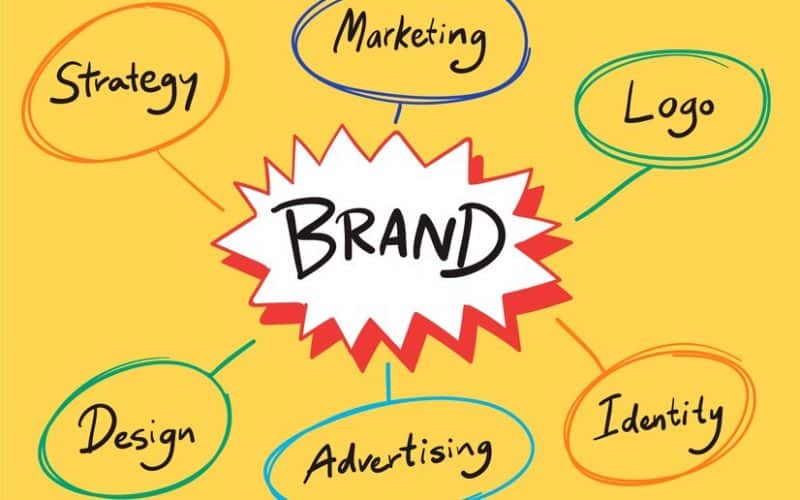Today, I’m going to talk about something really important for our businesses: brand examples. You know, those amazing companies that inspire us with their values, personality, and customer loyalty. As someone who’s worked in the field for a while, I’ve seen firsthand how brand examples can motivate us to create our own unique brand identities. So, let’s dive in and explore some amazing brand examples that’ll make you feel all the emotions!
Key Takeaways
- Brands are more than just logos or slogans; they are identities that distinguish products or services in the eyes of consumers. They create value, provide a competitive advantage, and communicate the company’s specialties and values to its target audience.
- Brands come in various forms, including corporate brands, personal brands, and product brands. Each type has unique strategies and purposes, from enhancing a company’s reputation to individuals marketing themselves to niche audiences.
- Core values drive brand actions and decisions. Brands like Patagonia and TOMS exemplify how commitment to environmental sustainability and social responsibility can build customer loyalty and enhance brand reputation.
- Examples of strong brand identities like Apple, LEGO, Coca-Cola, Patagonia, Spotify, McDonald’s, IKEA, and Bumble highlight how well-executed brand elements and values resonate with diverse audiences. These brands successfully convey their unique identities and foster customer loyalty.
What is a Brand?
According to marketing specialists, a brand is a product or service that has a distinct identity in the eyes of consumers. Design, packaging, and advertising components combine to create the brand, which distinguishes the product from competitors.
The product enhances the brand equity of the company that manufactures it. A well-executed brand adds great value to a firm, giving it a competitive advantage over others in the same industry. As a result, many corporations seek legal protection for their brands by registering trademarks.
Understanding Brands
A brand is an intangible asset comprised of numerous characteristics. Together, these elements assist consumers in identifying a product and providing reasons to choose it above its competitors.
The brand may communicate the impression that the product is more effective, easier to use, better tasting, cheaper, classier, hipper, or environmentally friendly than its competitors.
This is most difficult, of course, when the product is almost comparable to cheaper competitors. Advil, for example, is a brand name of ibuprofen. Through excellent advertising and packaging, its parent firm aims to persuade consumers that Advil’s ibuprofen is a better choice than the less expensive generic versions of ibuprofen that sit alongside it on pharmacy shelves.
Types of Brands
The type of brand used is determined by the entity using it. See the infographics below for the most frequent types of brands:
Why Are Brands Important?
Brands help organizations become more recognized by their present and future customers. They are also used to communicate with customers by highlighting the company’s specialties and how it compares to competitors. Business owners must create a brand to market their products, services, and values to their target audience.
Brand Examples
A brand example is a company that has successfully created a unique identity that resonates with its audience. It’s like that one friend who always knows how to make you laugh or that one mentor who inspires you to be your best self. According to a study by Harvard Business Review, brands that evoke emotions have a 2x higher chance of being recommended. That’s the power of brand examples!
Inspiring Brand Examples
Here are some of our top brand identity examples:
#1. Apple
Do we really need to explain how Apple’s identity works? The $3 trillion brand’s identity is based on innovation, simplicity, and premium quality, which it has been known for for decades.
Apple’s minimalist brand design, which includes the monochromatic Apple logo, elegant product aesthetics, and concise product names, emphasizes a commitment to simplicity and user-friendliness.
Apple’s brand messaging rests around a simple yet powerful promise: to empower people via technology. Consider their popular motto, “Think Different” (and maybe apply it to your own brand).
#2. Nike
Nike’s identity extends beyond its renowned swoosh logo. It even goes beyond whether or whether people pronounce their names correctly, demonstrating that brand identity encompasses far more than just ‘branding’.
Their objective, “To bring inspiration and innovation to every athlete in the world,” paired with a powerful motto, “Just Do It,” has defined the brand’s identity as one of tenacity, ambition, and athletic spirit.
Every aspect of Nike’s brand emphasizes this goal, from their television ads emphasizing inspiring athlete stories to their sleek, modern product designs and all of the apps they offer to consumers.
#3. LEGO
LEGO’s brand identity demonstrates the power of imagination. The brand is based on the joy of building and the creativity it fosters. The simple, powerful LEGO logo, vibrant primary colors, and whimsical artwork all convey a sense of fun and ingenuity. LEGO has managed to appeal to a diverse audience, ranging from children exploring their creative sides to adults indulging in nostalgic projects.
#4. Coca-Cola
Coca-Cola’s identity exemplifies stability and positivity. Coca-Cola’s brand, which is centered on enjoyment, sharing, and universal connectivity, has everlasting appeal.
The red-and-white emblem and curved text are easily identifiable. Even if the typeface spells out your name rather than Coca-Cola, you’ll recognize it as their identity. Over the decades, the brand has maintained its original bottle style, resulting in a strong visual identity.
Their advertisements frequently include touching moments of connection, reinforcing their image as a business that draws people together.
#5. Patagonia
Patagonia is a strong contender on our list of the top brand identity examples. Their mission is straightforward: “We’re in business to save our home planet.” The company successfully supports its principles of sustainability, leadership, and inclusivity, which run through every facet of its brand strategy and marketing efforts, and is the embodiment of a purpose-driven brand.
The brand’s logo, which depicts Monte Fitz Roy in the Southern Patagonian Ice Field, is instantly identifiable. Their logo accurately captures the brand’s essence and roots. Fans may instantly recognize the brand’s logo without knowing the name or the colors.
#6. Spotify
As 2023 came to a (much-needed) end, many of us were excited to share our Spotify Wrapped with our loved ones. The incredible marketing campaign capitalized on the wave of connectedness, making Spotify listeners feel like they were part of a community while highlighting their individual preferences.
Spotify’s visual identity is rather understated for a business that prioritizes music. A modest color palette of green, black, and white takes a backseat to the colorful album covers played on the streaming platform. The minimalist logo, which consists of three horizontally curving lines in a circle, reflects the sound’s flow and movement.
#7. McDonald’s
McDonald’s, the American fast food business known for its hamburgers, fries, and iconic golden arches, is a must-have on our list of brand identity examples. Donald’s brand identity, arguably one of the most recognizable in the world, is based on simplicity. Their no-fuss red and yellow palette is inviting, cheerful, and approachable.
McDonald’s brand strategy stands out since it is tailored to its target audience. Every part of their brand identity, from the logo and packaging to the overall brand message and tone, is geared toward their target audience. Consider Happy Meals or the whimsical characters Ronald McDonald and the Hamburglar: You can tell right away that McDonald’s designed these products for children.
#8. IKEA
You can walk into any IKEA, anywhere in the globe, and know precisely where the pillowcases are. The Swedish home furnishings giant has built a unique brand identity based on user-friendly design, which they have even incorporated into the layout of its retail locations.
Yes, the famous blue and yellow logo is memorable, but the company is most renowned for its functionality, sustainability, and affordability. In addition, the product names are ridiculous.
#9. Bumble
Bumble, a female-focused dating app, was launched in 2014 and has subsequently dominated the market. Bumble’s aim, founded on values such as respect and accountability, is to “create empowering connections in love, life, and work.” We advocate for accountability, equality, and kindness in order to abolish misogyny and rewrite antiquated gender norms. On Bumble, women always make the first move.
From their cheerful color scheme to their onboarding procedure and user experience, Bumble’s brand identity is strong in every way. They constantly reaffirm their brand principles and encourage women to be decisive and unapologetic in their dating experiences.
Personal Brand Examples
Now, let’s talk about personal brand examples. Personal branding is all about how individuals market themselves and their careers. It’s about carving out a niche and being known for something specific. Whether you’re an entrepreneur, a freelancer, or a corporate professional, building a strong personal brand can be a game-changer.
#1. Gary Vaynerchuk
Gary Vaynerchuk, or Gary Vee, is a stellar example of personal branding. He’s a serial entrepreneur, author, speaker, and internet personality. Gary Vee is known for his raw, honest, and no-nonsense approach to business and life. His brand revolves around hustle, entrepreneurship, and digital marketing expertise.
#2. Marie Forleo
Marie Forleo is another great personal brand example. She’s a life coach, motivational speaker, and author. Marie’s brand is all about empowering people to create a business and life they love. Her show, MarieTV, is a treasure trove of inspirational content.
In my journey, I’ve applied Marie’s advice on building a business around one’s passions. Her emphasis on blending creativity with business strategy helped me refine my brand consulting practice, making it more aligned with my core values.
Values of a Brand Examples
Let’s talk about the values of brand examples. These are the core principles that drive a company’s actions and decisions. Brands aren’t just about logos and slogans; they’re about values. Values define what a brand stands for and guide its actions and decisions. Let’s explore some powerful values of brand examples.
#1. Patagonia
Patagonia is a brand that epitomizes environmental responsibility and sustainability. Their mission statement, “We’re in business to save our home planet,” speaks volumes. Patagonia’s commitment to environmental causes is evident in its products, practices, and advocacy.
#2. TOMS
TOMS is known for its one-for-one business model. For every pair of shoes purchased, TOMS donates a pair to someone in need. This value of giving back has made TOMS a beloved brand worldwide.
I remember buying my first pair of TOMS and feeling a sense of pride, knowing my purchase made a difference. This value-driven approach not only enhances brand reputation but also creates a community of loyal customers who share the same values.
Private Brand Examples
Private brands, or private label brands, are products that a retailer produces and sells under its own brand name, often positioned as a lower-cost alternative to national brands. Let’s dive into some noteworthy private brand examples.
#1. Kirkland Signature (Costco)
Kirkland Signature is Costco’s private brand, known for its high quality and competitive pricing. From groceries to household items, Kirkland Signature offers a wide range of products that rival national brands.
As a frequent shopper, I often choose Kirkland products for their quality and value. Their organic offerings, in particular, are a hit in my household. This experience underscores the appeal of private brands in delivering quality at a lower price point.
#2. Walmart
Great Value is Walmart’s private brand, offering a variety of products from food to household essentials. The brand promises quality and affordability, making it a popular choice among budget-conscious shoppers.
I’ve used Great Value products and found them to be on par with more expensive national brands. This consistency in quality and price has made me a repeat customer, showcasing the potential of private brands in building customer loyalty.
How do you Identify a Brand?
Taking all of the brand examples above into account, it is clear that building a solid brand identity entails much more than simply designing a logo or selecting a color palette. Here is what you should do to build a firm foundation.
#1. Research your Target Audience
Understanding your target demographic intimately is the foundation of creating a memorable brand identity. Examine their demographics, preferences, needs, and behaviors to determine what connects with them. And don’t be afraid to use that knowledge.
#2. Define your Brand Vision and Mission
Your brand’s vision and mission serve as guiding principles, providing it with a feeling of purpose and direction. It’s about why you exist, what you intend to accomplish, and the value you want to offer. When creating other brand assets, consider whether they align with our brand statement and values. This is how you develop a strong brand identity.
#3. Develop and Test your Brand’s Visual Elements
Visual aspects are the foundation of your brand identity. This includes your logo, color palette, typography, and images. Each of these pieces should reflect your brand’s identity and be consistent across all media.
#4. Determine your Brand’s Tone of Voice
It is not about what you say, but how you convey it. Are you formal or casual? Professional or friendly? Irreverent or serious? Copywriting instructions should be an important part of your brand standards. Your tone of voice should be consistent throughout all communication channels, even internally.
#5. Set Goals and Assess Achievement with your Brand Identity
We are not designing brand identities for fun. Okay, perhaps a little. However, your brand identity should be created with specific, measurable goals in mind, such as increasing brand recognition, improving brand loyalty, or repositioning your company in the market.
This exclusive Brand Story Template is a valuable resource for businesses looking to build a strong brand identity. Download it now and use our insights to build a powerful brand story.
What is a brand and example?
A brand is the identity of a product, service, or company that differentiates it from others in the market. It’s like a person’s personality, values, and reputation all rolled into one. Think of a brand like a person you know. Just as you have your own unique identity, a brand has its own unique character that sets it apart.
Examples of brands that are often cited as great brand examples include:
- Apple
- Nike
- Coca-Cola
- Amazon
What is considered a brand?
A brand is much more than just a fancy logo or catchy jingle. It’s the entire experience a customer has with your business. Any unique identity, values, and messaging entity can be considered a brand!
Can a brand be a company?
Yes, a brand can definitely be a company! In fact, a company is often the most common type of brand. A company brand refers to a business organization’s overall image, reputation, and identity.
Conclusion
Brand examples have the power to inspire us, make us feel emotions, and build trust with our audiences. Whether it’s a personal brand, a values-driven brand, or a private brand, the key is to stay authentic and true to your purpose. So, what brand example has made you feel a strong emotional connection, and how has it influenced your own branding journey? Share your story in the comments below!
Related Articles
- Strategies for Building an Internal Brand at Your Company: 11 Ultimate Tips
- What is Brand Advertising? How To Build Brand Awareness
- Brand Marketing vs. Content Marketing: How They Differ and Work Together
- Personal Brand Statement Mistakes: I Reviewed 1000 Profiles, and 90% Get This Wrong
- Personal Brand Traits: Your Key to Trust, Excellence, and Effective Leadership






